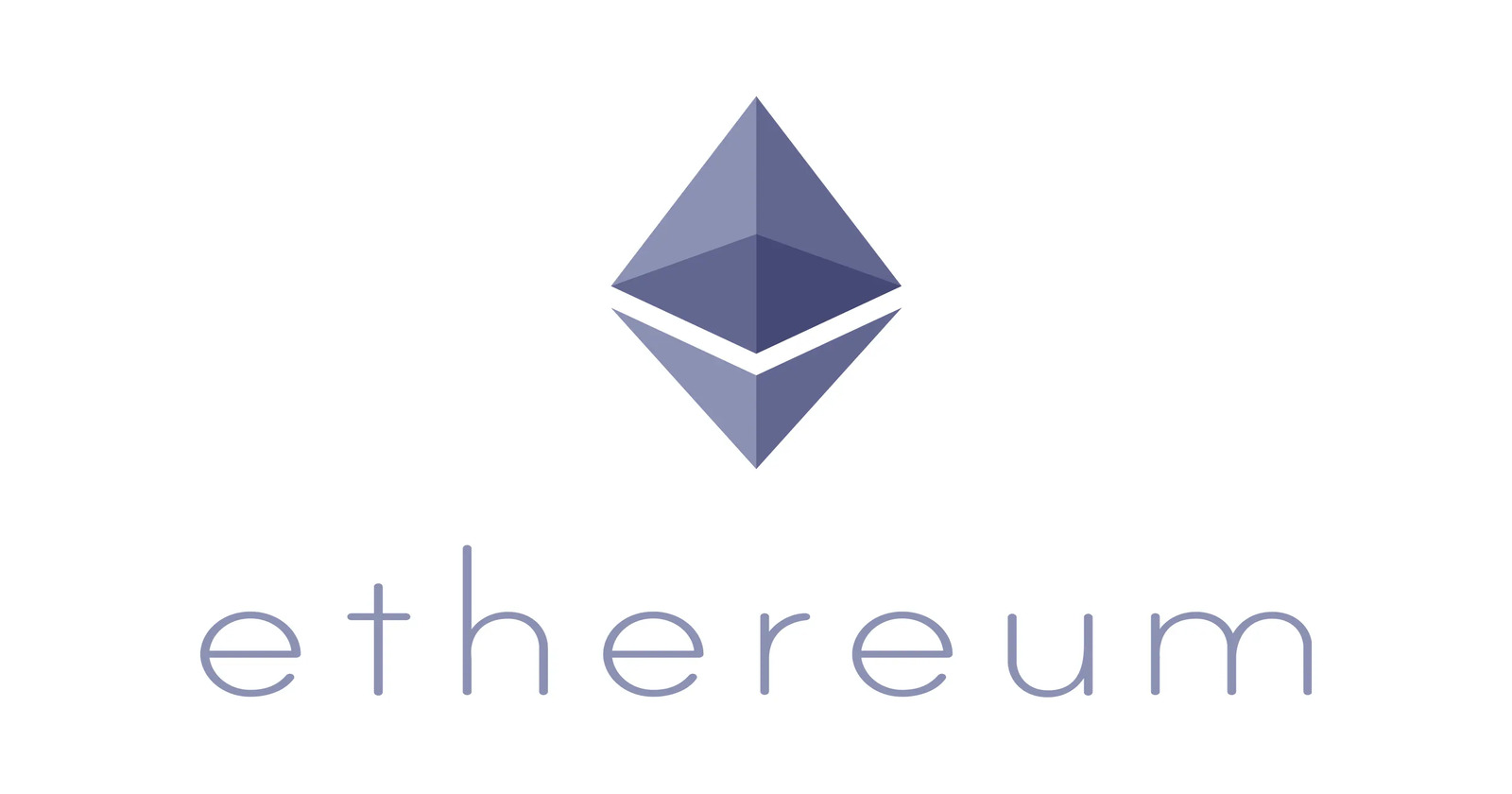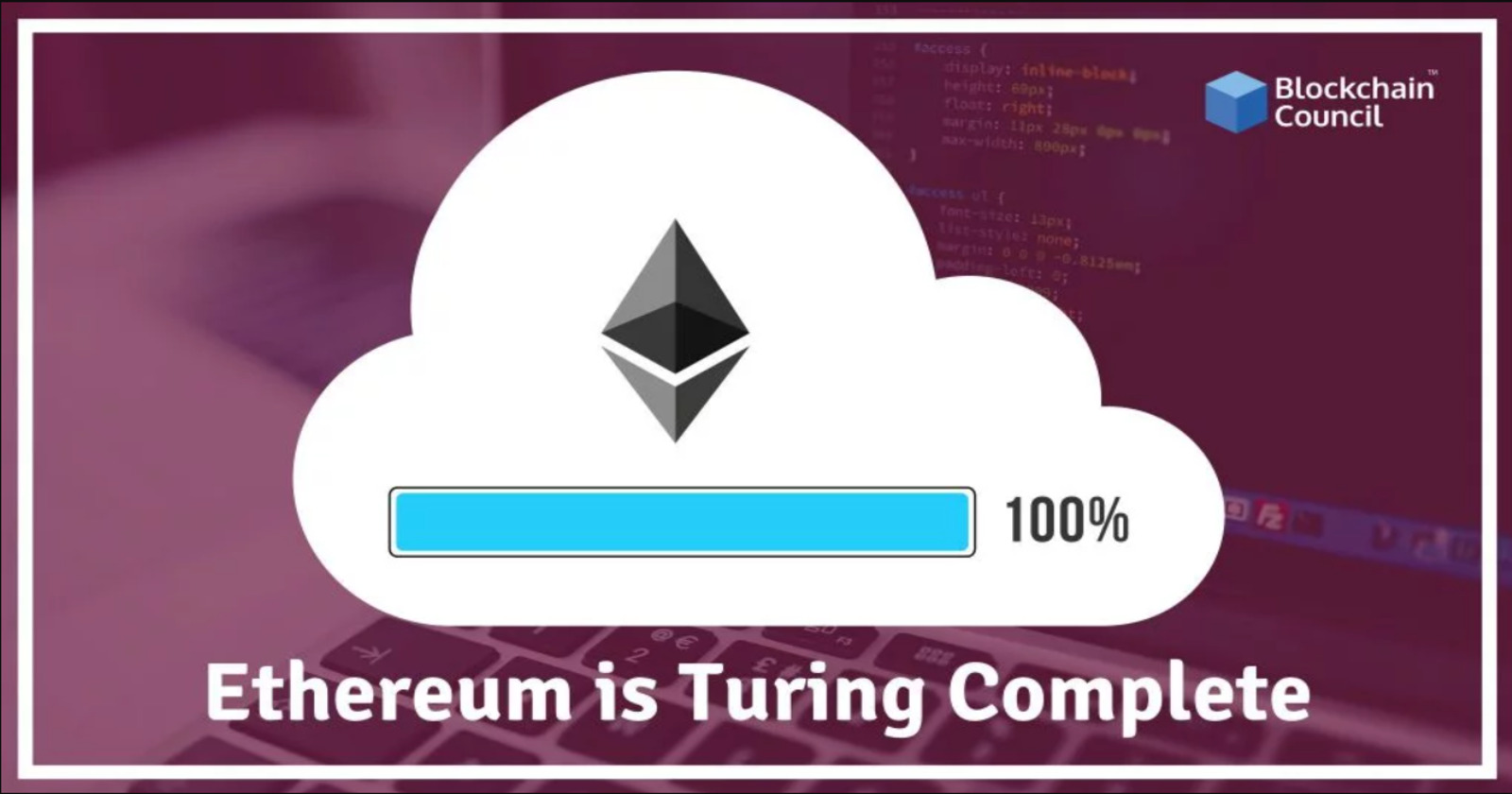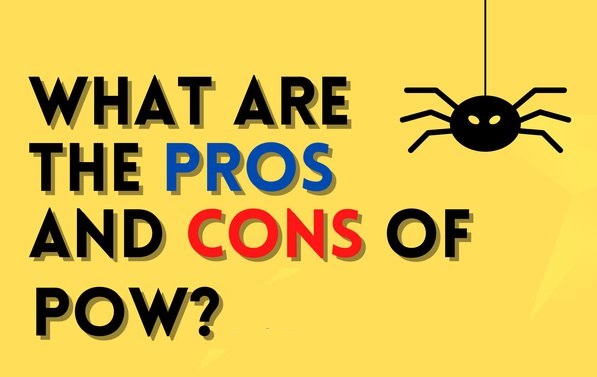Ethereum - Turing Completeness & Pros-Cons of PoW
 Dhruv Srivastava
Dhruv Srivastava
Welcome back to our ongoing exploration of the fascinating world of Ethereum! In our previous article, we delved into the basics of Ethereum, exploring its innovative capabilities and decentralized nature. Now, it's time to take a closer look at two critical concepts: Turing Completeness of Ethereum and Proof-of-Work (PoW). These foundational elements underpin the Ethereum blockchain and play a vital role in shaping its functionality and security. In this follow-up article, we will examine the Turing Completeness of Ethereum along with the advantages and drawbacks of the PoW consensus mechanism.
Is Ethereum a Turing Complete Machine?

About Turing Complete Machine:
Alan Turing used the term "Turing-completeness" to describe the idea that some computing machines are capable of doing any task that a computer can execute. Turing completeness is a principle at the heart of software and application development, allowing code to be created without first determining whether or not it will work. To put it simply, "Turing-complete" programming allows programmers to create code that can be used by any machine to achieve any outcome. This is critical for assessing the usability and many other features of the product.
In theory, Turing's completeness allows for the production of highly advanced programs in a single language while also allowing other teams or businesses to produce highly advanced applications using the same tools. If a language can be used to imitate a Turing machine, it is Turing complete, which means that a correctly constructed program can solve any issue that a Universal Turing Machine (UTM) can solve. Bitcoin and its programming language, Script, were created as a non-Turing complete system with limited capabilities. The Bitcoin software was designed simply to handle Bitcoin transactions and is therefore incapable of supporting complicated, multi-step smart contract logic. Turing completeness is thus a feature of a programming language, and for this to be possible, programs must be free of constraints such as halting and infinite loops.
A basic calculator is an example of a Turing Incomplete system since it can only do a limited number of calculations. A Turing Machine, on the other hand, is a programmed scientific calculator that can execute any type of computation.
Is Ethereum a Turing Complete Machine?
Ethereum was the first Turing complete blockchain, allowing smart contracts and decentralized applications (DApps) to be programmed. It does not rely on third-party services because it is based on programmable smart contracts. Because Ethereum is Turing Complete, it can comprehend and implement any future agreement, including those that have not yet been dreamt of. In other words, Ethereum's Turing Completeness means that it can utilize its code base to execute almost any work as long as it has the proper instructions, adequate time, and processing power. However, there are doubts about whether this is realistic due to the high costs of Turing complete systems and their capacity to function constantly without human interaction.
Because of the practical mechanics of the blockchain, Ethereum can only be stated to be Turing complete on the highest theoretical level. Because every transaction on Ethereum costs gas to complete, if a smart contract were to enter an endless loop - which is theoretically feasible on a Turing computer - it would ultimately run out of gas. This limitation in Ethereum's Turing completeness is intentional, as having numerous smart contracts running on indefinite loops is undesirable for a public blockchain network with finite processing capacity. As a result, every Ethereum transaction has a gas limit, which determines the maximum amount of computational power that may be given to the transaction. When the limit is reached, the transaction is refused if it is not finished. It is worth noting, however, that relatively few Ethereum smart contracts use recursive loops and other characteristics that need Turing completeness.
Cons of Ethereum as a Turing Complete Machine:
Turing complete systems' infinitely programmable nature is their greatest strength, but it may also be a serious vulnerability, especially in public blockchains where code is exposed to all. This means that the programming may be subject to interruptions (such as defects in smart contracts) or unintentional usage that impair the protocol's intended functionality. Being able to program any type of calculation opens up a world of possibilities, none of which can be predicted. If an unexpected problem arises in a centralized system, the firm that owns the code can promptly offer a fix. However, with a blockchain-based system, it might create significant disruption if someone discovers a means to trigger an event that the creator did not predict. Because the blockchain is decentralized, software upgrades may take longer because each change must be voted on by the community.
Pros-Cons of PoW

What is Proof-Of-Work:
As described in the last article, the majority of cryptocurrencies now in circulation use Proof of Work consensus. The algorithm validates the transaction and adds a new block to the blockchain. PoW is the initial Bitcoin network consensus technique. To validate transactions and produce new blocks, miners must solve complicated mathematical challenges. Miners compete to solve these problems, and the first miner to do so is rewarded with fresh coins. PoW's key benefit is its high level of security. Because of the processing power necessary to answer the riddles, conducting a 51% assault on the network is exceedingly difficult. The disadvantage is that it consumes a substantial quantity of energy, making it ecologically unfriendly.
Proof of work (PoW) is a method of adding fresh blocks of transactions to the blockchain of a cryptocurrency. In this scenario, the task consists of creating a hash (a lengthy string of characters) that matches the desired hash for the current block. The crypto miner that achieves this is rewarded for adding that block to the network. To confirm the block, a crypto miner must create a target hash that is less than or equal to the block's hash. Miners do this by employing mining machines that generate calculations fast. The goal is to be the first miner with the desired hash since that miner will be the one to update the blockchain and collect cryptocurrency incentives. Because getting the target hash is tough, but confirming it is not, proof of work works effectively with Bitcoin. The technique is complicated enough to prevent transaction records from being manipulated. At the same time, once a target hash is discovered, it is simple for other miners to verify it.
Pros of Proof-Of-Work:
The major benefit of proof-of-work is that it provides a robust mechanism for gaining consensus and avoiding abuses and misappropriations. It is important to note that consensus lies at the heart of blockchain technology and its specialized applications, such as cryptocurrencies, as well as its advantages, such as security, trust and legitimacy, and decentralization. PoW is essentially a mechanism for authenticating transactions without the use of a third party and prevents people or organizations from tampering with the database. The technique makes changing any component of the transaction ledger impossible, assuring the legitimacy and traceability of each transaction. One distinct benefit of PoW is that it is based on computing capability. Although an individual may hypothetically tamper with the blockchain, doing so would need growing computational capabilities that are both impracticable and uneconomical to the point where the cost greatly surpasses the rewards or benefits.
To summarize the benefits of PoW, consider the following:
High level of security.
Provides a decentralized method of verifying transactions.
Allows miners to earn crypto rewards.
Cons of Proof-Of-Work:
The most significant downside of proof-of-work is the processing skills required to solve mathematical problems to authenticate blockchain transactions. This is also one of the most significant downsides of blockchain, a fundamental critique of cryptocurrencies, and the primary reason that PoW-based blockchains have bad environmental consequences. Of course, to participate in a blockchain network that uses PoW as a consensus method, a participant must have a powerful computer equipped with advanced technology; scaling the operation necessitates the purchase and installation of more expensive equipment. Aside from the financial difficulties, powerful computers require a lot of energy. Furthermore, to remain operational and prevent overheating, as well as the related damage to hardware components caused by internal heat buildup, these devices require an effective heat management or cooling system. The same energy-intensiveness is also the cause of proof-of-work's more particular shortcomings. PoW-based blockchains, for example, have scalability restrictions because of the expense of running and maintaining sophisticated computer systems.
To summarize the disadvantages of PoW, consider the following:
Inefficient with slow transaction speeds and expensive fees.
High energy usage.
Mining often requires expensive equipment.
The 51% risk: If a controlling entity owns 51% or more than 51% of nodes in the network, the entity can corrupt the blockchain by gaining the majority of the network.
Time-consuming: Miners have to check over many nonce values to find the right solution to the puzzle that must be solved to mine the block, which is a time-consuming process.
Conclusion
The current shift to PoS via Ethereum 2.0 aims to solve the challenges faced while respecting the Ethereum network's founding values of security and decentralization. Proof-of-Work is the foundation upon which the Ethereum blockchain's security and immutability are based. However, because of its high energy consumption and scalability limits, it has spurred debate and initiatives to investigate alternate consensus procedures. The Ethereum community's current transition to Proof-of-Stake with Ethereum 2.0 seeks to increase scalability and energy efficiency while preserving a secure and decentralized network. As the blockchain industry evolves, the Ethereum community is committed to improving infrastructure, increasing scalability, and reducing energy usage in the future.
Subscribe to my newsletter
Read articles from Dhruv Srivastava directly inside your inbox. Subscribe to the newsletter, and don't miss out.
Written by

Dhruv Srivastava
Dhruv Srivastava
I am a third year undergrad student at the Indian Institute of Information Technology (IIIT) Bhagalpur, pursuing B.Tech in the field of Computer Science. I am focusing to learn some extra skills along with the theoretical knowledge attained through my chosen course, so that I can implement my theoretical knowledge in a much more enhanced way with the help of the skills learned in the practical world. I have been learning Web Development in the past one year along with Blockchain. I have tried to work on some personal projects such as Personalized Online Piano and a team project HnC. My team was amongst the Top 10 Teams selected for Regional round in Smart India Hackathon (SIH) 2022 from our college. Currently I am Pupil at Codeforces (Max Rating 1234) and a 3 Star Coder at Codechef (Max Rating 1648). I have been appointed at a few other positions in my college which include Coordinator of the Blockchain Club (Hashrate), Marketing Lead (GDSC).